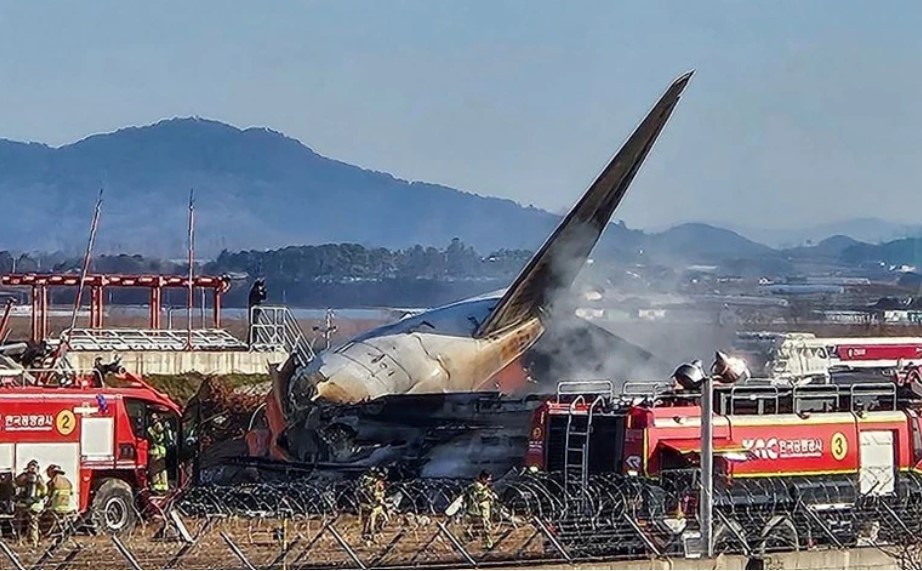What Happened in the Tragic Jeju Air Crash in South Korea?
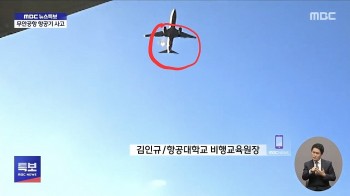 A Bird Strike Moments Before the Crash of Jeju Air Flight A Bird Strike Moments Before the Crash of Jeju Air Flight |
 'A Bird is Stuck on Wing' - Final Text Message of Jeju Air Plane Passenger 'A Bird is Stuck on Wing' - Final Text Message of Jeju Air Plane Passenger |
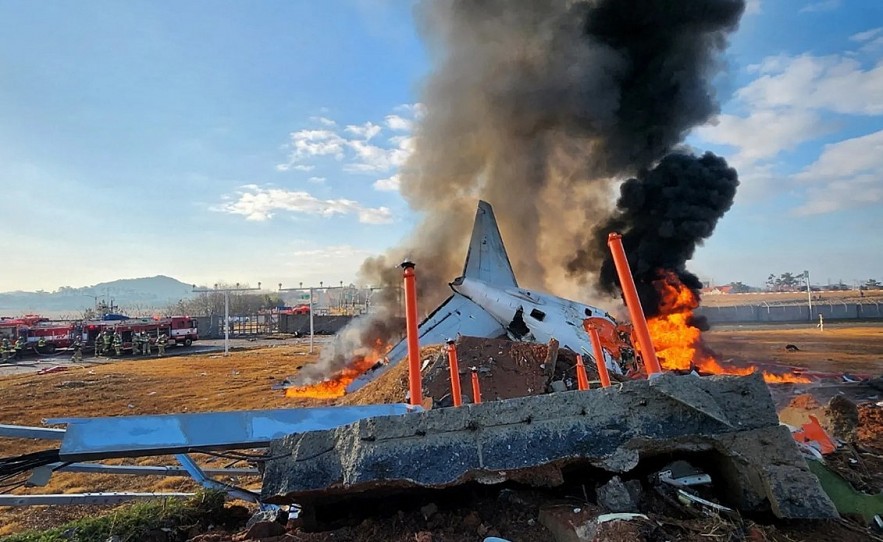 |
| What Happened in the Tragic Jeju Air Crash? |
The crash of Jeju Air Flight 7C2216 at Muan International Airport has left South Korea and the global aviation community in shock. Authorities believe that nearly all 181 people aboard perished, with only two survivors pulled from the wreckage.
Rescue scene of Jeju Air plane crash in Korea:
Timeline of Events
-
The Flight and Initial Approach:
Jeju Air Flight 7C2216 departed Bangkok, Thailand, in the early hours of December 29. As it approached Muan International Airport around 9:00 a.m. local time, the crew reported difficulties with the landing gear, which failed to deploy. The aircraft attempted to land but aborted the attempt, executing a “go-around” maneuver to circle back for a second try.
-
The Final Moments:
At 9:03 a.m., the aircraft attempted a belly landing. Witnesses reported that the plane skidded along the runway before crashing into the airport's perimeter wall. The impact split the plane into two sections, causing a massive fireball that engulfed the fuselage. Firefighters arrived promptly but took nearly 50 minutes to extinguish the flames, by which time the extent of the tragedy became evident.
-
Last Message from a Passenger:
Moments before the crash, a passenger sent a chilling text message to a loved one, revealing a potential cause of the disaster. The message read:
“A bird is stuck on the wing, and the plane can’t land. This just happened. Should I leave a final message?”
The sender’s family lost contact with them soon after, a tragic prelude to the unfolding catastrophe.
-
Bird Strike Footage Released:
Local broadcaster MBC News aired footage that allegedly shows a bird strike moments before the crash. The video, captured by an eyewitness, appears to depict a large bird colliding with the aircraft during its final approach. Experts believe the collision may have damaged the landing gear, contributing to the failure that led to the attempted belly landing.
-
Rescue and Recovery:
Among the 181 onboard, two survivors—a crew member and a passenger—were rescued from the tail section and are receiving treatment at a nearby hospital. Search teams continue to comb through the wreckage for remains, as many victims are believed to have been trapped in the fire.
-
Casualties and Nationalities:
Of the 175 passengers, 173 were South Korean citizens, and two were Thai nationals. The loss has deeply impacted communities in South Korea, with several entire families aboard the flight.
Ongoing Investigations
South Korea’s Ministry of Land, Infrastructure, and Transport is leading an extensive investigation into the crash. Key areas of focus include:
- Bird Strike Impact: Experts are analyzing whether the suspected bird strike critically damaged the landing gear or other essential systems.
- Flight Data Analysis: The flight data recorder (FDR) and cockpit voice recorder (CVR) are being examined to reconstruct the sequence of events and assess the crew’s response to the emergency.
- Weather Conditions: Investigators are also considering whether environmental factors, such as strong crosswinds or runway conditions, exacerbated the situation.
Government and Airline Response
Acting President Choi Sang Mok visited the crash site, expressing his condolences to the victims’ families and pledging full government support for recovery and investigation efforts. “This tragedy is unimaginable. We will do everything possible to assist those affected and uncover the truth,” he stated.
Jeju Air CEO Kim E. Bae publicly apologized, stating: “We deeply mourn the loss of our passengers and crew. While the cause of this incident is still under investigation, we take full responsibility and will work tirelessly to support the victims’ families.”
Aviation Safety Under Scrutiny
This disaster has sparked debates over aviation safety in South Korea. Known for its strong safety record, the country has seen few major incidents in recent years. However, this crash highlights the vulnerability of low-cost carriers (LCCs) to rare but catastrophic events. Enhanced measures, such as improved wildlife management near airports and more rigorous maintenance checks, are likely to emerge from the findings of this tragedy.
The crash also casts a shadow on the Muan-Bangkok route, one of the first international routes to operate from Muan International Airport in 17 years. Its tragic debut underscores the need for heightened safety protocols as South Korea expands its aviation network.
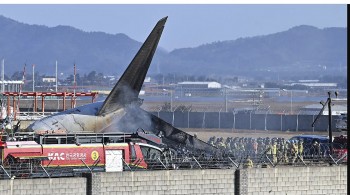 South Korea Plane Crash Kills at Least 62: Bird Strike South Korea Plane Crash Kills at Least 62: Bird Strike An aircraft carrying 175 passengers has driven off a runway and crashed into a wall at an airport. Bird strike is among several theories that ... |
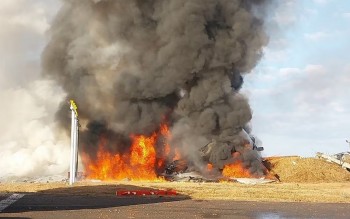 Cause of South Korea Plane Crash Kill 179: Bird Strike, Damaging the Landing Gear Cause of South Korea Plane Crash Kill 179: Bird Strike, Damaging the Landing Gear The tragic crash of Jeju Air flight 7C2216 on December 29, 2024, at Muan International Airport in South Korea, shocked the world. Only 2, both ... |
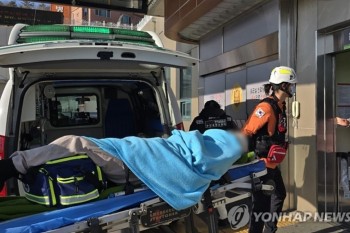 Surviving Flight Attendant Recounts the Moment Jeju Air Plane Crash Surviving Flight Attendant Recounts the Moment Jeju Air Plane Crash In the terrible accident that killed nearly all 181 people on a Jeju Air flight on December 29, Lee Mo was one of two fortunate ... |


